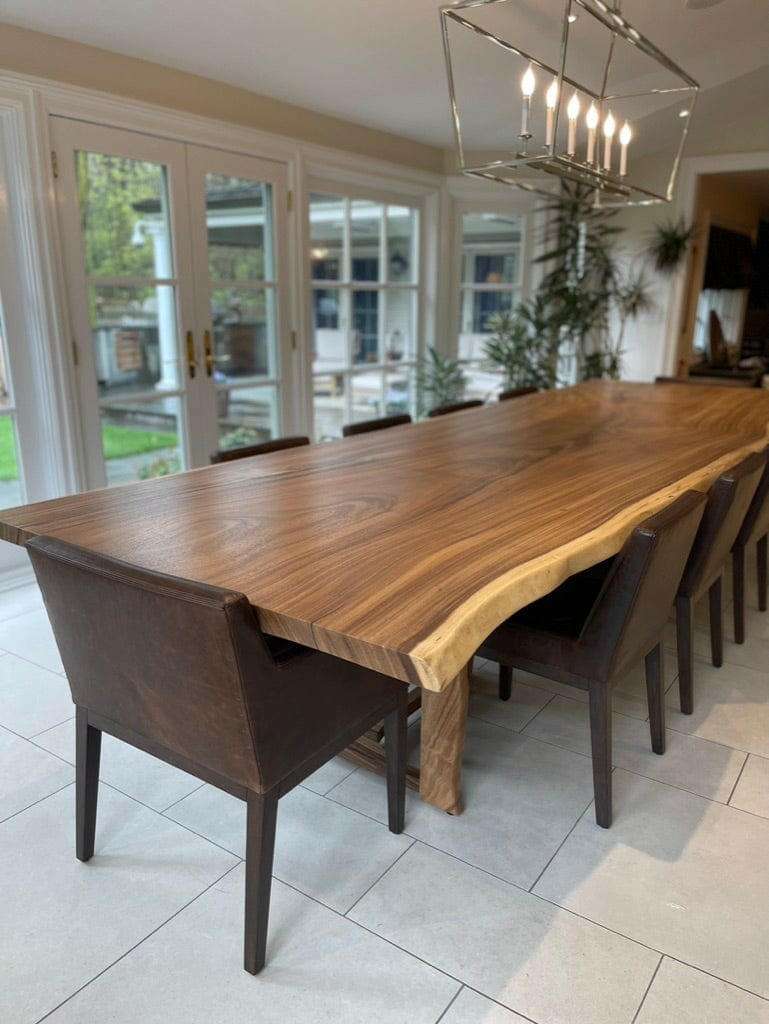Discover the most effective Materials for Dining Room Table Legs for each Style
Discover the most effective Materials for Dining Room Table Legs for each Style
Blog Article
A Comprehensive Take A Look At Table Leg Styles: Discovering the Perfect Match
Selecting the appropriate eating table leg design is vital for both aesthetic allure and useful performance. For those with bigger tables, trestle legs guarantee sturdy assistance, whereas hairpin legs introduce a mid-century modern vibe with their minimal layout. The x-shaped legs blend contemporary style with enhanced stability.
Conventional 4 Legs
Among the various types of dining table leg designs, the conventional four-leg layout continues to be an ageless selection for several households. Four legs provide balanced support, making certain the table remains steady and qualified of bearing substantial weight (dining room table legs).
From a visual viewpoint, the typical four-leg style can be quickly adjusted to numerous interior styles. Whether crafted from wood, metal, or a mix of products, these legs can be intricately carved, sleek and minimalistic, or anything in between. Their versatility allows them to complement both rustic and modern setups perfectly.
Furthermore, the simple structure of the four-leg layout assists in simplicity of motion and placement within a space. Unlike more complicated bases, this style decreases obstructions, supplying enough legroom for diners. In summary, the traditional four-leg table leg design weds withstanding style with functional functionality, making it a sharp selection for those looking for both kind and function in their eating furnishings.
Stand Base
Usually commemorated for its classy and space-efficient design, the stand base is a notable choice to the standard four-leg setup in table leg styles. This distinct base usually includes a single main column sustaining the tabletop, which can differ in kind, from ornately carved wood to streamlined, modern metal. Among the key advantages of the pedestal base is its capacity to maximize legroom and seating versatility. Without edge legs, restaurants are afforded higher flexibility of activity, making it a perfect option for round and oblong tables that advertise more intimate and inclusive events.
Additionally, the stand base's central support can manage considerable weight, enabling using much heavier table tops, such as marble or thick hardwood. This stamina combined with its visual adaptability makes the stand base a prominent option in both standard and contemporary interior settings. It can seamlessly incorporate with numerous layout styles, from traditional beauty to minimalist modernity. The main column itself uses a canvas for elaborate designs and imaginative expressions, including an aspect of visual passion underneath the table. In summary, the pedestal base incorporates performance snappy, making it an improved and functional option for varied eating settings.
Trestle Legs
Trestle legs supply a robust and ageless foundation for eating tables, characterized by their straight cross-bracing and strong support light beams. Originating from middle ages times, this design has actually evolved yet maintained its important framework, making it a perennial navigate here fave in both traditional and modern setups. The central trestle light beam, frequently sustained by two or more upright posts, uses remarkable security, allowing for larger table sizes without the need for extra legs.
A substantial advantage of trestle leg tables is the sufficient legroom they supply. Unlike tables with four corner legs, the lack of blockages at the table's edges offers unobstructed room for chairs and diners, improving convenience and accessibility. This makes trestle tables optimal for suiting bigger gatherings, whether in a dining-room or a reception hall.
From rustic farmhouse to streamlined modern-day layouts, trestle legs can be tailored to match specific tastes. Their enduring allure and practical advantages make trestle legs an engaging choice for those seeking both style and practicality in their eating table.
Barrette Legs

The appeal of barrette legs depends on their simplicity and flexibility - dining room table legs. Readily available in a variety of materials, consisting of steel and brass, they can be ended up in numerous colors to match various indoor designs. Whether paired with a rustic wooden table top or a modern glass surface area, barrette legs effortlessly blend performance with a touch of classic appeal
Durability is another significant attribute of barrette legs. Regardless of their delicate appearance, these legs are engineered to bear substantial weight, making sure the table continues to be secure and safe and secure. Additionally, they are relatively easy to install, making them a popular choice for DIY enthusiasts and professional furniture makers alike.
X-Shaped Legs

Built from materials such as steel, timber, or a mix of both, X-shaped legs can be customized to match various design preferences. Steel legs typically offer a streamlined and commercial feeling, ideal for loft-style houses and contemporary dining areas.
Additionally, the design behind X-shaped legs makes certain also weight circulation, minimizing the risk of wobbling and enhancing resilience. This makes them especially appropriate for larger dining tables that need additional support. In essence, X-shaped legs blend practical engineering with modern visual appeals, making them a timeless choice browse around these guys for diverse eating settings.
Verdict
A detailed understanding of dining table leg styles reveals the distinctive attributes and benefits of each layout. Trestle legs guarantee durable assistance for larger tables, and barrette legs introduce a mid-century modern-day aesthetic.
Report this page